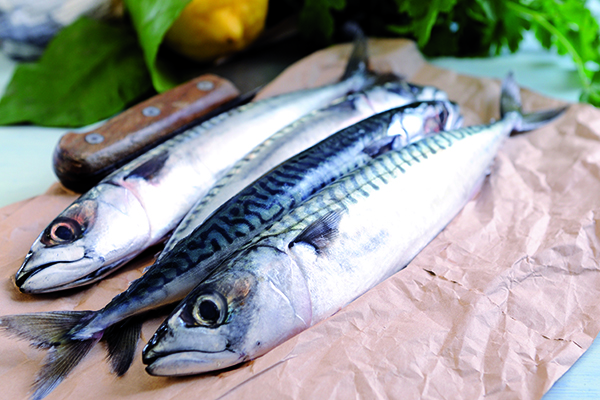Artichokes, for example, began their season in Italy before Easter, but the British season often lags some way behind. Mario Matassa is your guide to your local market’s fare…

Mackerel – Sgombro
This silver-bodied fish with dark grey stripes is a close relative of the tuna fish, yet has quite a different flavour. Plentiful in supply, packed with health-bestowing properties, and relatively cheap to buy, it’s hardly surprising that mackerel has become one of the most popular fish to use in Italian summer cooking over the years. It is predominantly prepared simply, often barbecued almost as soon as it can be brought in from the sea, stewed in a tangy tomato sauce, or stuffed with onions, thyme or parsley, and then baked in the oven. It can also be found marinated or smoked, but as it is quite a full-flavoured, rich fish, it does not work very well with creamy sauces, but tart, citrussy accompaniments are the perfect match.
Artichoke – Carciofo
Still in season, the artichoke is infamous for its careful preparation requirements, but a reward awaits in the subtly flavoured leaves and succulent heart. Often served on its own sprinkled with vinaigrette, the artichoke also comes in useful for salads, pasta, or even as a pizza topping. To prepare, trim the stem to 2cm, then remove 2cm from the top of the vegetable. Remove the outer leaves, until the lighter ones are visible. Cut the artichoke in half, scoop out the furry choke and place the artichoke in lemon water, until needed.
Peas – Piselli
In season from June until August, this fresh tasting, vibrant green vegetable is the perfect symbol of spring; there’s nothing quite like sitting down to peas just picked from the pod, summer garden smells surrounding you, while you sneak the odd one into your mouth. Peas are a very versatile ingredient, which work well in most dishes, but in Italy are particularly savoured in pasta e piselli and the Venetian risi e bisi (rice with peas). They can also be used as an accompaniment to meat or an addition to soups and risottos.
Lamb –Agnello
Contrary to perceived wisdom, the lamb season proper only starts in May/June. For the next few months, lamb meat will be very tender, but as the season goes on, and the flesh becomes slightly less tender, the flavour intensifies. There are many ways to cook lamb – if it is young it works well roasted or grilled with garlic, thyme, rosemary or mint, but if slightly older, it will benefit from being slow-cooked in a stew or ragù. Breaded lamb cutlets are also a popular and delicious choice in Italy.
Cherries – Ciliegie
This fragrant summer fruit comes in a wide array of colours – the sweetest and juiciest being the rich dark red varieties, adopting a slightly sharper flavour and firmer flesh as they near the yellow end of the spectrum. In Italy, as well as being eaten on their own and used in desserts and cakes, cherries are often preserved in alcohol, blended with liqueurs, and even transformed into a sauce to team with meat, particularly rich varieties of game. cuttlefish seppia In many ways, cuttlefish is similar to squid – it has an ink sac in its body, which can be used in dishes such as seppiette in nero con polenta (polenta with cuttlefish ink), and is prepared in the same way, by removing the beak, eyes, innards and ink sac – but it has a smaller body and less chewy texture. It is mainly found stuffed, then baked or grilled, or stewed in a tomato sauce.
Also in season:
- Strawberries – Fragole
- Raspberries – Lamponi
- Gooseberries – Uve spine
- Cauliflower – Cavolfiore
- Courgettes – Zucchini
- Asparagus – Asparagi
- Spring onions – Cipolline
- New potatoes – Patate novelle
- Turbot – Rombo
